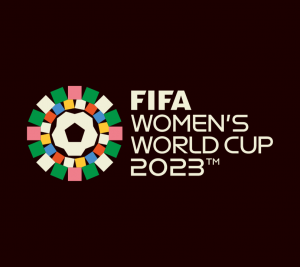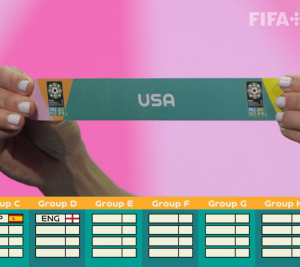By Kara Sherrer
 While the FIFA Women’s World Cup is supposed to be a competition between the best soccer teams in the world, some matches are closer than others. For instance, in the most recent World Cup, the Netherlands team left Vietnam scoreless after 7 goals. Even worse, in the 2015 World Cup, Germany – Ivory Coast (10–0) and Switzerland – Ecuador (10–1) were clear blowouts.
While the FIFA Women’s World Cup is supposed to be a competition between the best soccer teams in the world, some matches are closer than others. For instance, in the most recent World Cup, the Netherlands team left Vietnam scoreless after 7 goals. Even worse, in the 2015 World Cup, Germany – Ivory Coast (10–0) and Switzerland – Ecuador (10–1) were clear blowouts.
These severely imbalanced matches result from several factors, including how teams qualify and FIFA’s creation of groups during the tournament’s first stage. While several proposals have been made for alternative systems that would be more fair, no research has empirically quantified the extent of the competitive imbalance at the Women’s World Cup—until now.
Michael Lapré, Associate Professor of Operations Management at Vanderbilt Business, studied this phenomenon in his paper “Quantifying the impact of imbalanced groups in FIFA Women’s World Cup tournaments 1991–2019,” published in the Journal of Quantitative Analysis in Sports. He co-authored the paper with Elizabeth Palazzolo (BA’22), a former undergraduate research assistant.
How does the World Cup work?
Understanding the qualification requirements and tournament stages of the Women’s World Cup is critical to interpreting the findings of Lapré’s research. The tournament recognizes 6 continental confederations based on geography: North and Central America (CONCACAF), South America (CONMEBOL), Europe (UEFA), Africa (CAF), Asia (AFC), and Oceania (OFC). FIFA caps the number of teams from each confederation that will advance to the World Cup tournament.
The allocation of confederation slots is not aligned with the distribution of the best teams in the world. Several highly ranked teams from Europe do not get to participate, whereas several lower ranked teams from other confederations are given a spot in the World Cup. In other words, qualifying spots are partially given according to geography, not necessarily to the strongest teams in the world overall.
This lack of fair competition continues into the World Cup itself. Once teams make it to the tournament, they compete in 2 stages: the group stage and the knockout stage. In the initial group stage, teams are sorted into groups of 4, then play the other 3 teams round-robin style; the best teams from each group advance to the knockout stage.

A screenshot from the 2023 Women’s World Cup Draw. The event was live-streamed and can be viewed here.
To create the groups, FIFA makes “pots,” with the strongest ranked teams being in pot one and the rest based on geography. A team from pot one is assigned to each group, and the rest are randomly drawn from the other pots; this means there are unbalanced groups where some are much stronger than others, posing an issue for competitiveness and fairness.
“For a fair tournament, it is imperative that groups are of similar strength,” Lapré explained. “If one group has much stronger teams than another group, it will be much harder to advance from the stronger group compared to the weaker group. Such a scenario is considered unfair.”
Research method and findings
To determine how imbalanced and unfair the groups were, Lapré and Palazzolo used a type of analysis called least squares to calculate team ratings for all teams in each Women’s World Cup between 1991 and 2019. They used the team ratings to calculate the strength for each group as well as the group opponents rating for each team. Finally, they investigated whether or not group opponents rating impacted the probability of reaching the quarterfinal.
They found that the range in group strength was more than one goal in each World Cup and was as high as 3.5 goals in 2003. The range in group opponents rating was more than 2 goals in each World Cup and was as high as 4.5 goals in 2003. Using logistic regression, they also showed that one goal less in group opponents rating can almost double the probability of reaching the quarterfinal. These numbers provide empirical evidence of substantial competitive imbalance across groups at the Women’s World Cup.
“Our results show that for an average team, even a small reduction in group opponents rating by just a single goal can increase the probability of reaching the quarterfinal from 36% to 69%, which is a huge increase,” Lapré said. “Therefore, to improve the level of fairness, it is important to reduce the competitive imbalance across groups.”
Implications and recommendations

Michael Lapré, Associate Professor of Operations Management
Based on their research, Lapré and his co-author conclude the paper by offering 3 recommendations that could make the Women’s World Cup more competitive and fair. First, they advocate for changing the draw system so that the groups are more evenly balanced. They also point out that reducing the number of teams to create a more homogenous, competitive pool would help.
Finally, they suggest that the allocation of the number of teams to each confederation be changed to better reflect the actual distribution of top-ranked teams in the world. This would allow confederations with many strong teams, such as Europe, to send more highly ranked teams to the World Cup.
The full text of the paper, including figures, can be found on Lapré’s Vanderbilt Business faculty bio page. Lapré and Palazzolo also recently studied imbalanced groups from the FIFA Men’s World Cup tournaments. Read more here.